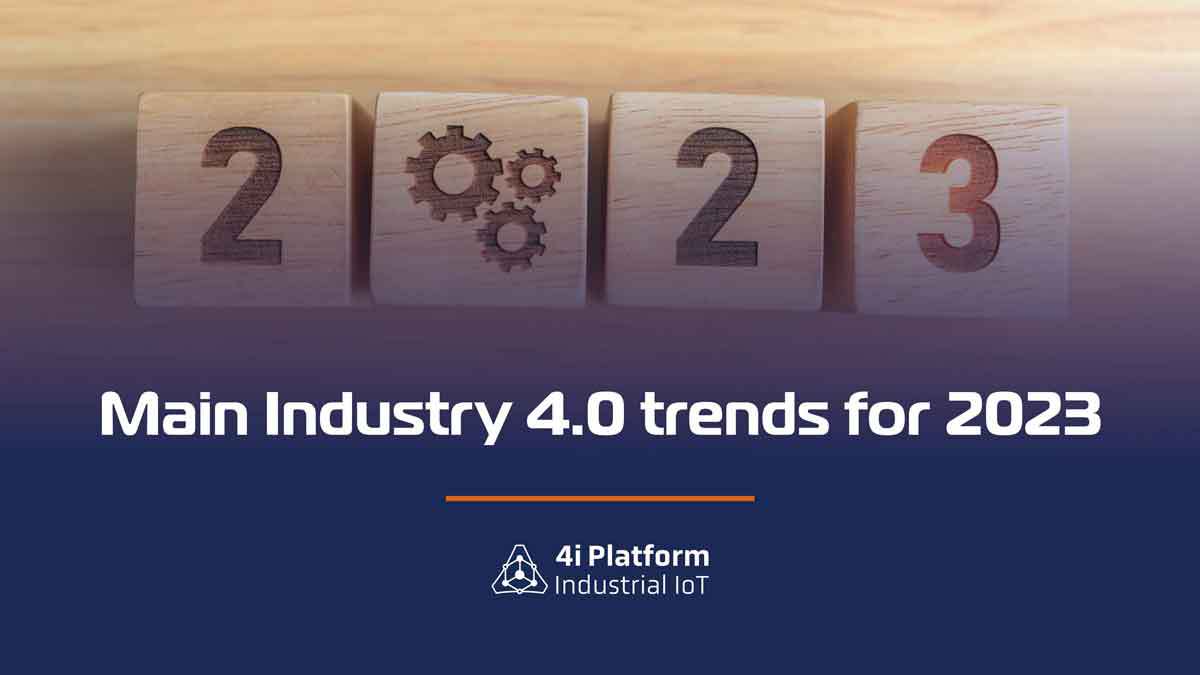The last few years have seen some big changes in the manufacturing sector. And the digital transformation has introduced both new solutions and new challenges. As we head into 2023, after a year of financial and political turmoil and rising costs, the only certainty is uncertainty.
Despite all this and the speed of change, some trends emerged which will shape the manufacturing industry in 2023 and beyond.
Let’s have a look at the Industry 4.0 trends for 2023.
Green Technology, One of the Industry 4.0 Trends for 2023
In 2011, the world population hit the seven billion mark, and 11 years later, on November 15, 2022, it reached eight billion.
Many industries are turning to technology to make industrial processes more sustainable. Now more than ever, the manufacturing industry -and industry in general- is working on reducing its carbon footprint.
Man cannot do it alone and needs the help of technology to reduce the impact on the environment and create a more sustainable planet.
Digitalization of Data
A major Industry 4.0 trend for global companies is the digitalization of data. Then, the system stores files in the cloud that are accessible from anywhere in the world. Instead of relying on printed documents or physical models, manufacturers can use tools like 3D scanners, CAD software, motion capture systems, and the like, to record every detail of their product in real time.
Additionally, some companies are using augmented reality to visualize processes and data and analyze or carry out complex tasks. This generates visual instructions in real time using backup equipment located around the world.
Uses of Artificial Intelligence in Manufacture
Artificial intelligence (AI) has transformed manufacturing processes. Anywhere from recognizing patterns and predicting consumer behavior to reusing equipment and freeing up resources, IA has given the industry a boost in ways never seen before.
Thanks to its intelligent automation capability, AI can help reduce tasks that waste energy, materials, and time. It will automate manual tasks, optimizing the process and reducing costs.
As the use of IA becomes more widespread in manufacturing, businesses will discover new ways to make the most of this cutting-edge technologies. Therefore, they will achieve their production goals faster, more cheaply and efficiently than ever before.
Predictive Analytics Will Continue to Grow
During the COVID-19 pandemic, predictive analytics apps, like preventive maintenance and predictive monitoring, proved to be critical in alerting about failures that were about to occur, bottlenecks, or a decrease in quality.
That is why the rate at which this technology is being adopted shows no signs of abating. On the contrary, businesses need fast, precise, and reliable answers, as well as operation visibility and optimization.
The world market is predicted to reach 67.2 billion dollars in 2030, a significant increase from 8.3 billion in 2022. It is expected that cloud-based predictive maintenance will dominate the market in 2023.
The Internet of Things (IoT)
The current Industry 4.0 trend towards a smart and hyperconnected world will cause the IoT networks (interconnected sensors, devices, and infrastructure that collect, transmit, and process data) to expand. A study forecasts that the global IoT market will reach 2.5 billion US dollars in 2029 from 478 billion in 2022, with a compound annual rate growth of 26%. This model will allow for more complex interactions between devices. In 2023, there will be more work done on global standards and protocol development. As a result, devices will be able to use to communicate and to work more efficiently.
Cybersecurity Will Remain a Concern
Lastly, cybersecurity is one of the more pressing issues in the manufacturing industry in 2022 and 2023.
According to a PwC survey, 49% of manufacturers mention cybersecurity as one of the biggest challenges for the next couple of years. The search volume of the phrase “cybersecurity in manufacturing” has gone up by 300% in the last five years. This trend is definitely not going away.
For manufacturers, cybersecurity in 2023 means more than the protection against hackers and cyberthieves. It includes the ability to recover from cyberattacks, strategic plans to fight data piracy and ransomware, and backup strategies to keep operating in case of partial interruptions.
For this reason, 2023 could bring about many changes.
As we head into 2023, manufacturers will face more challenges. Among them are cybersecurity, labor shortages, ESG demands, an uncertain economic climate and the rise of more digitally advanced competitors.
4i Platform urges manufacturers to move forward with their digital transformation. To build on the foundations already in place and to take bold steps. To adopt new technology solutions that will drive their business forward in 2023.





